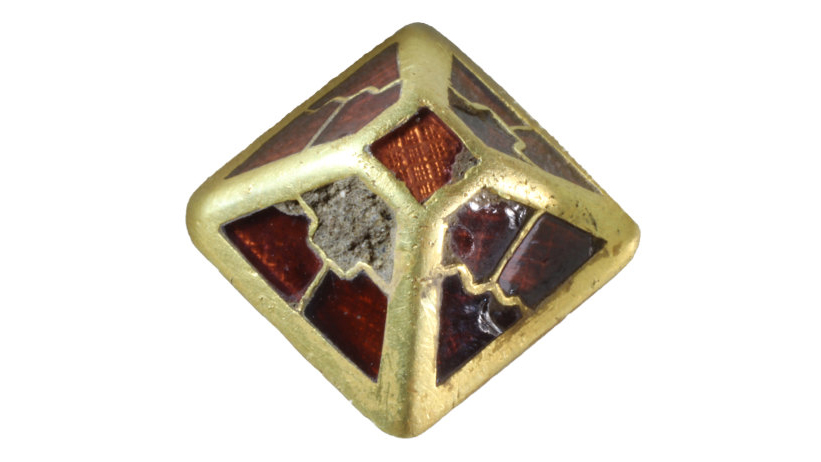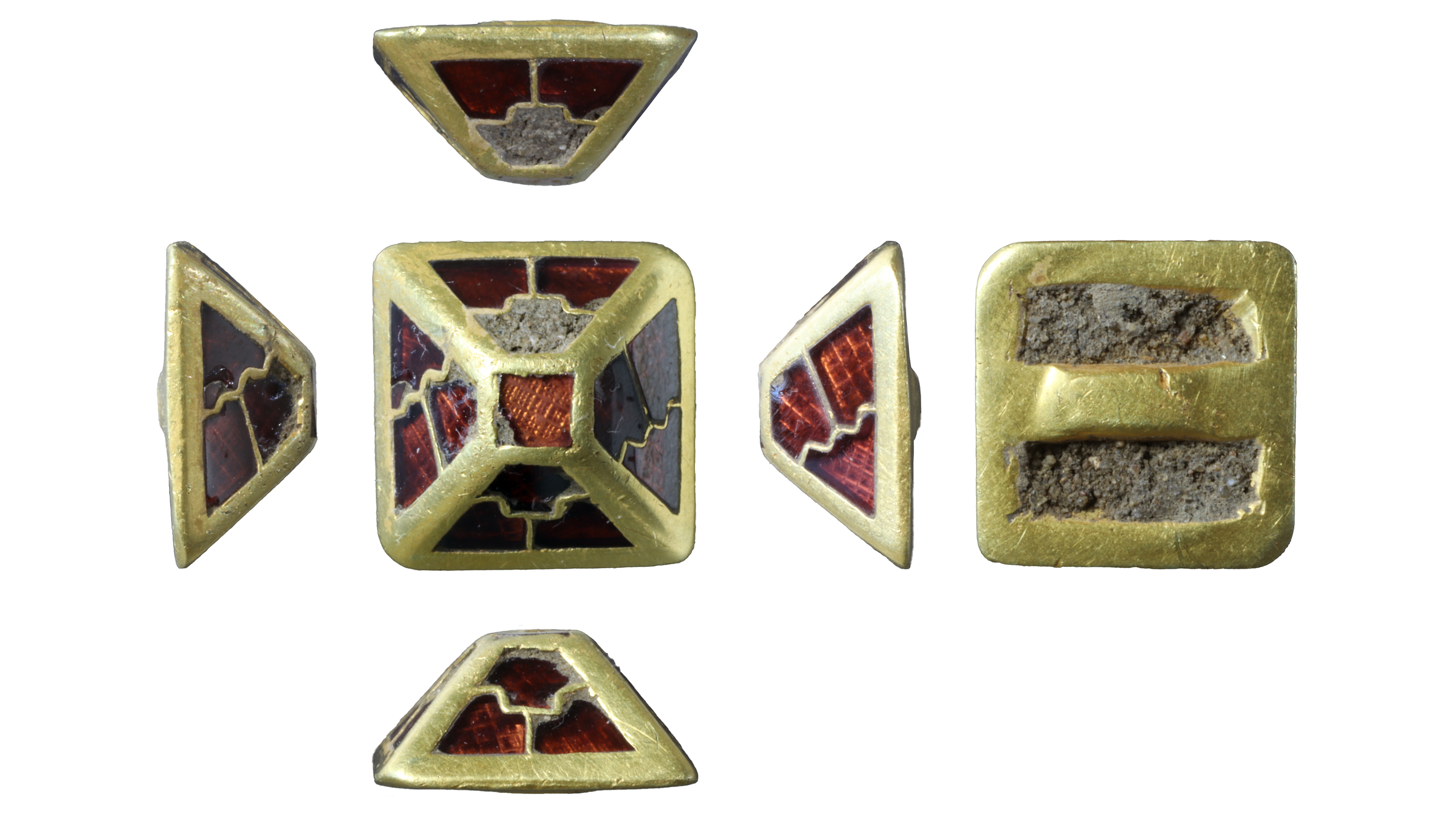Metal detectorist finds sword pyramid from time of mysterious Sutton Hoo burial
The 1,400-year-old sword pyramid was likely a status symbol.

A metal detectorist in England discovered a tiny pyramid-shaped artifact that may have been used by an elite warrior at the top of his scabbard.
The 1,400-year-old sword pyramid is about 0.24 inches (6 millimeters) high and 0.47 inches (12 mm) long at its base.
It was found in a place where no archaeological site is known to exist.
"There is no archaeological site associated with the find," said Helen Geake, a national finds adviser with the Portable Antiquities Scheme (PAS), run by the British Museum and National Museum Wales. "It seems to have been randomly lost in the middle of nowhere, not buried, and not put out with the rubbish in a crowded settlement." Metal detectorists are encouraged — and, in some cases, required — to report discovered artifacts to PAS.
Related: Bones with names: Long-dead bodies archaeologists have identified

The sword pyramid is made of gold and garnet stones that may have come from India or Sri Lanka, likely arriving through long-distance trade routes. Sword pyramids are "rather rare finds, and this one appears to be fairly well constructed," Eleanor Blakelock, a researcher at University College London's Institute of Archaeology who is an expert on historical metallurgy, told Live Science in an email.
Sword pyramids like this one were also found at the Sutton Hoo burial, which dates to roughly the same time period. This medieval ship burial — so elaborate and mysterious that it has been likened to the world of the Old English epic "Beowulf" — likely contained the remains of an elite individual, such as a king.
Sign up for the Live Science daily newsletter now
Get the world’s most fascinating discoveries delivered straight to your inbox.
What were they used for?
Researchers have proposed various possible uses for these sword pyramids. "In graves, sword pyramids are always at the top of the scabbard," Geake said. One theory holds that they were a "peace band" of sorts that made it harder for a person to draw their sword, as they would have to remove the sword pyramid first, she said.
Sword pyramids "appear to have been studs used to fasten a sort of retaining strap onto the scabbard of the sword, so that it would not wave around too much when being carried slung from a sword belt," John Hines, an archaeology professor at Cardiff University in Wales, told Live Science. "The sword itself was very much a prestige weapon in the middle of the 7th century, when this pyramid was made," Hines said in an email, noting that, at that time, swords were probably used only by high-status warriors who had a king's permission to carry the weapons.
The sword pyramid was "a very high-status item, and I suspect that with this item, part of its purpose is to signify just how far up in society its wearer was," said Paul Mortimer, an independent scholar who co-wrote the book "The Sword in Anglo-Saxon England: from the 5th to 7th century" (Anglo-Saxon Books, 2019). The sword pyramid "may show membership of a particular group or possibly mark an achievement," Mortimer said, adding that it could also "have had a practical function and be part of the method that connected the sword to the belt or baldric."
The sword pyramid is now going through the treasure process required by U.K. law, which will determine whether the artifact enters a museum collection there.
Originally published on Live Science.

Owen Jarus is a regular contributor to Live Science who writes about archaeology and humans' past. He has also written for The Independent (UK), The Canadian Press (CP) and The Associated Press (AP), among others. Owen has a bachelor of arts degree from the University of Toronto and a journalism degree from Ryerson University.









